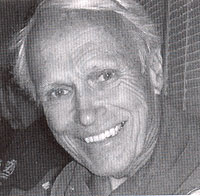Where Has Divine Madness Gone?
By Anton Lysy
Originally printed in the MARCH-APRIL 2008 issue of Quest magazine.
Citation: Lysy, Anton. "Where Has Divine Madness Gone?" Quest 96.2 (MARCH-APRIL 2008): 63-67.
Of madness there were two kinds, one produced by human infirmity, the other . . . a divine release of the soul from the yoke of custom and convention. . . . The divine madness was subdivided into four kinds—prophetic, initiatory, poetic, and erotic—having four divine beings presiding over them.
The Prophetic was the inspiration of Apollo.
The Initiatory was the inspiration of Dionysus.
The Poetic was the inspiration of the Muses.
The Erotic was the inspiration of Aphrodite and Eros.
—Plato's Phaedrus (265a-b)
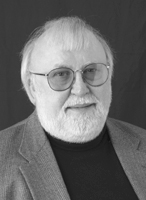 I WAS ONE OF THREE THEOSOPHICAL SOCIETY members who attended a "Colloquium in Ancient Philosophy" at the University of Arizona in Tucson last February. As we arrived near the Law School Library, we were shocked to encounter two green dumpsters overflowing with books. Considering possible causes for this apparent crime against literacy, I immediately thought of the Phaedrus, a dialogue where Socrates points out that the written word is unable to defend itself from faulty interpretations by readers who will distort the author's intentions.
I WAS ONE OF THREE THEOSOPHICAL SOCIETY members who attended a "Colloquium in Ancient Philosophy" at the University of Arizona in Tucson last February. As we arrived near the Law School Library, we were shocked to encounter two green dumpsters overflowing with books. Considering possible causes for this apparent crime against literacy, I immediately thought of the Phaedrus, a dialogue where Socrates points out that the written word is unable to defend itself from faulty interpretations by readers who will distort the author's intentions.
While continuing to wonder if this encounter were an omen, we resumed our journey to the program entitled "Plato and Socrates on the Nature and Teaching of Virtue" which included fifteen presentations by philosophy teachers from universities around the United States. The twenty hours of presentations and discussions took place during an intense period beginning on a Friday morning and lasting through Sunday noon. Although all three of us Theosophists, like HPB, love and respect the two Athenian philosophers, we were exhausted by the sheer amount of information and the rapid-fire exchanges of the presenters with the audience of specialists in the field of philosophy. I longed for some time to meditate and to refresh my exhausted powers of listening and reflection through the reinvigorating force of participating in the sacredness of silence. Then, perhaps, a form of Divine Madness would surface from deep within me or swoop down (supervene) from above to transform my prosaic consciousness.
Since Paul Woodruff from the University of Texas in Austin was the only presenter at the conference that I already knew of through his two recent books, I will limit my comments to his writings and presentation. Author of Reverence: Renewing a Forgotten Virtue (2001), and First Democracy: The Challenge of an Ancient Idea (2005), the paper he presented was entitled "Are Platonic Virtues Thick or Thin?" an intriguing distinction that I had never before encountered.
Reverence: Renewing a Forgotten Virtue
To these ideals of truth and purity we must add one that is lacking in modern life: the ideal of reverence for what is noble, of adoration for what is higher than oneself. Modern life is becoming petty because we are not strong enough for reverence. It is becoming base, sordid and vulgar because people fear that they will sink if they bow to that which is greater than them. But worship of that which is higher than yourself raises you; it does not degrade you. The feeling of reverence is a feeling that lifts you up; it does not take you down. We have talked so much about rights that we have forgotten that which is greater than our rights. It is the power of seeing what is nobler than we have dreamed and bowing before it till it permeates our life and makes us like it. Only those who are weak are afraid to obey; only those who are feeble are afraid of humility.
—Annie Besant, World Parliament of Religions, 1893
If one enters the word "reverence" into the search engine of the CD-ROM Theosophical Classics that includes HPB's collected works, one will get a quantitative sense of how important the concept was for her. She defined it as "to regard one with fear mingled with respect and affection." She also quoted Coleridge's rendering of it as "the synthesis of love and fear." And yet, she stressed that the great awe, deferential regard, and deep respect expressed through reverence is in no way the same as worship.
HPB and Colonel Olcott had, for example, made a powerful impact on the Indians of Bombay who witnessed their arrival and Olcott's striking gesture of reverence. When he left the ship, Olcott kissed the first granite step to show his regard for the "sacred soil" the two had reached after their important journey from New York. According to historian Bruce Campbell, "Their respectful and even reverential attitude toward India won them the admiration of Indians."
I first encountered Paul Woodruff inadvertently on the PBS Now program with Bill Moyers. The following exchange between the two men caught my attention immediately:
Bill Moyers: How do you define reverence?
Paul Woodruff: I think reverence is the capacity for awe in the face of the transcendent.BM: The transcendent being—
PW: It's whatever we human beings did not create: God, justice, and the truth . . .BM: Beauty.
PW: Nature, beauty.BM: Death?
PW: Death is one of the most awe-inspiring facts of our lives. And I think complementary to the awe in the transcendent is a felt sense of our own mortality and our own limitations, our own tendency to make mistakes . . .PW: The best clue to how reverent we are is how we treat the weakest people around us . . .
BM: You say, simply put, reverence is the virtue that keeps human beings from trying to act like gods.
Since hosiotes, the Greek word for reverence featured in Woodruff's book, is not a familiar term to most of us, the concept can perhaps best be understood in contrast to the more familiar Greek term, hubris. Hubris is the inflated, grandiose, and arrogant pride that leads one wrongly to feel superior to others (to tread on the territory reserved for gods in ancient Greece).
The Theosophical Society's First Object, to form a nucleus of the universal brotherhood of humanity without distinction of race, creed, sex, caste, or color, for example, is incompatible with hubris. And those who allow their affection for animal welfare/rights or anything else to interfere with their compassion and sense of kinship with human sisters and brothers would seem to lack reverence for the rough processes involved in evolution and transformation that are inherent in the Divine Plan.
Plato had Socrates, in the Republic (415a), resort to telling a "noble lie" to maintain an artificial sense of reverence for the division of labor demanded in that ideal city. This arrogant lie maintained that God mixed the rulers with the greatest privileges with gold. The next group in the hierarchy was mixed with silver, and finally, downward to the farmers and laborers who were mixed with iron and copper. If everyone accepted his or her "ore," there would be harmony in the state. In contemplation of the "noble lie," Woodruff concludes "Power without reverence is aflame with arrogance, while service without reverence is smoldering toward rebellion" (4).
The Theosophical Society's motto, There Is No Religion (Dharma) Higher Than Truth, can be interpreted with an interesting correlation to its First Object that is both honest and compassionate about the full range of human differences in ability and opportunity. Woodruff adds, "Reverence sets a higher value on truth than on any human product that is supposed to have captured the truth" (39). It is the truth seeking of the inquiry (the hunt) rather than the reported truth of the publication (the feast). There is no "nobility" in lying that will not be seen through by an honest youth like the one who noticed and remarked that the Emperor's delusional vestments were not visible. Woodruff writes, "It is a natural mistake to think that reverence belongs to religion. It belongs, rather, to community" (5). In Theosophy, the community includes all beings, all places.
In Protagoras (320d—322d), Plato had the famous Sophist tell a creation story about how the gods had delegated to Prometheus and Epimetheus the task of distributing differing powers to different species. When interpersonal conflict was about to destroy humanity, Zeus sent Hermes to give conscience and justice to humans—to all humans, not to only a few as in the distribution of skills and abilities. This combination of conscience and justice when added to humility and honesty about one's limitations would clearly be a composite capable of holding in unity a dazzling array of differences. Woodruff states, ". . . without reverence, things fall apart" (13).
Throughout his book on the subject, Woodruff shows his reverence for Plato while disagreeing with many of Plato's teachings. As Nietzsche held, we repay a teacher poorly by not going beyond her or his teachings. Our contemporary American philosopher asks us to remember who we are in a broad and deep historical context:
Remember that you are human: this is the central message of ancient Greek reverence. "How could I forget?" you ask? Very easily, especially if you are so rich, so powerful, or so successful that you push every thought of failure away from your mind—every thought of human error, madness, or death. But you will err, if you are human; you will do crazy things, no matter how hard you cling to the notion that your mind is sound; and you will die. Between now and death you will have many opportunities to crash down from whatever height you have reached, and you will fall harder if you forget that the human path is strewn with stumbling blocks. (81)
First Democracy:
The Challenge of an Ancient Idea
If you had not seen it, you would never believe how much more freedom pets have in this democratic community compared with any other. The dogs really do start to resemble their mistresses, as the proverb says. . . . And everything else is just as saturated with freedom . . . (563c)
Taking all this in consideration, the long and short of it is that the minds of the citizens of a democracy become so sensitive that they get angry and annoyed at the slightest hint of enslavement. . . . And they're so worried about the possibility of anyone having authority over them that they end up . . . taking no notice of the laws either, whether written or unwritten. (563d)
—Plato's Republic
Plato has Socrates conclude "that dictatorship is bound to arise out of democracy" (564a), a conclusion that has frightened me more and more every four years since 1960. Woodruff's First Democracy, on the other hand, gives one a form of hope that is grounded on a commitment to work on becoming a better citizen:
In truth, the idea of democracy served the Athenians far better than the Athenians served democracy. Yes, democracy is hard to achieve: yes, it is impossible to make perfect. But democracy is not a utopian ideal, because it takes human imperfections into account better than any other ideal of government. The ancient inventors of democracy knew that even the best of us can be distracted by ambition or fear from doing what is right. They knew how easily success leads to pride and pride to arrogance. From an ancient tradition of poetry, they knew by heart how arrogance leads to blindness and blindness to catastrophic mistakes. Democracy was born out of a reverent awareness of human folly, and it was designed to prevent its leaders from having the unchecked power that could lead even the wisest of them from arrogance to foolishness. (5—6)
The Second Object of the Theosophical Society, to encourage the comparative study of religion, philosophy, and science, seems to spring from the same source that envisions democracy. It embodies a profound mission of inquiry into differences that can develop understanding and tolerance as well as respect and reverence. At the Feet of the Master by J. Krishnamurti teaches "You must learn that no ceremonies are necessary; else you will think yourself better than those who perform them. Yet you must not condemn others who cling to ceremonies."
Woodruff, looking at contemporary American democracy in the light of the ancient Athenian form, illuminates the roles of "Freedom from Tyranny," "Harmony," "The Rule of Law," "Natural Equality," "Citizen Wisdom," "Reasoning Without Knowledge," and "Education" in successive chapters writing with simplicity and clarity that one rarely finds in the columns of our newspaper, journal, or blog pundits from anywhere on the political spectrum.
The book ends with a chapter entitled "Are Americans Ready for Democracy?" The last paragraph raises the following questions for inquiry and discussion:
Are we ready to shake off the idea that we are already a perfect exemplar of democracy? Are we ready to put the goals of democracy foremost in our political minds, as many Athenians did? Are we ready to admit our mistakes and learn from them, as they did? Are we ready to have a national conversation about democracy? Most important, are we ready to keep the great dream alive, the dream of government of the people, by the people, and for the people?
In other words, are we willing to do the work that will forever disprove Plato's contention "that dictatorship is bound to arise out of democracy?"
Are Platonic Virtues Thick or Thin?
We know well enough what it is like not to know the virtues; Plato gives us many examples of people who think they know and do not. He also gives us a shining example of someone who knows he does not know the virtues—Socrates. I call his example shining because Socrates, unlike the others, does not seem much the worse for his ignorance. Apparently, he has found a good life without moral knowledge.
We do not have a clear picture, however, of what it would be like to know a virtue. If justice is, in its true nature, what readers of Plato call a Form or Idea, then—as Aristotle pointed out—we cannot see clearly how knowing that Form would help us make moral decisions in our own world of change and confusion. Or, to put the matter in terms of Plato's allegory, if we are living entirely in a world of shadows, as in a cave, how would it help us to know what things are like outside the cave?
The distinction between "thick" and "thin" at the presentation turned out to be based on whether a principle was involved.
A thick account of courage would harbor a principle. . . . A thick concept (if there is such a thing) is an inseparable bundle of description and attitude; examples are lewd, tactless, honest, patronizing, etc. Thick concepts seem to straddle the gap that a principle is supposed to guide you across.
Plato conceives all virtues as thin; that is, none of them are susceptible to a definition that harbors a principle that would determine how we should act in all given circumstances.
Woodruff concludes that, for Plato, "knowledge of virtues could not be a matter of principles," and, consequently, "that the shadows of the cave are not to be measured in that way" since they "are not objects of knowledge." That "shining example" of a human being, Socrates, however, can be named and used as a model that exemplifies good or bad behavior. But what he is cannot be defined.
The Third Object of the Theosophical Society, to investigate unexplained laws of nature and the powers latent in humanity, seems to recognize the thick/thin distinction. The humans who we have considered to be exceptional, advanced, or evolved (the Dalai Lama, Mother Theresa), are people who show us a new set of possibilities in their very presence, not merely in what they say. The reverence that Annie Besant spoke of at the 1893 Parliament was based on the recognition of a superior state of being that one emulated as a paradigm. What had been latent in the young Socrates was later manifest in the "World Teacher" who displayed principles of loyalty to his home state of Athens and its laws, principles that would not allow him to escape from drinking the hemlock that would end his life.
Where Is the Madness?
A religion old or new that stressed the magnificence of the universe as revealed by modern science might be able to draw forth reserves of reverence and awe hardly tapped by the conventional faiths. Sooner or later, such a religion will emerge.
—Carl Sagan, Pale Blue Dot
Just as it had been great to see Paul Woodruff with Bill Moyers on Now to develop a sense of the man within his writings, it was wonderful to witness his presentation and to hear him speak informally with his colleagues between lectures. He had to leave before the last day because of family obligations but I felt some of the same qualities in his presence as I had at the 1993 Parliament when the Dalai Lama was near.
Before the last session on Sunday, there was a commotion outside of the classroom. At break time, I found out that a falcon had swooped down on a pigeon. The discarded books in the dumpsters before the conference again came to mind. And now there was this display of power and destruction in the animal kingdom at the end reminiscent of the Sophist in The Republic who claimed might was right.
I was grateful to have listened to the many speakers, even more grateful for the compilation of papers presented that I could reread and ponder later. But I had not experienced the joy and enthusiasm I usually feel at the end of programs that I attend that are filled with ample time for reflection and meditation.
If there was any prophecy coming from Apollo, it seemed to be conveyed via the symbols of the dumpsters filled with books and the falcon attacking the pigeon. There had been no sense of an Initiation or a new beginning, Dionysian or otherwise, just a termination. My notes were filled with diagrams and logical symbols, smeared ink on the yellow legal pad, and no sign of anything from the Muses.
But still there was a renewed sense of the love of wisdom and a deeper reverence for the many people who have inspired me throughout my life. And there was a deep sense of gratitude knowing that my companions, Martin and Susan Leiderman, would be with me at Far Horizons, our Theosophical Camp in the Sierras of California, to offer a program entitled Beyond Plato On Love before Labor Day. The pace of our program would be slower and, hopefully, its range would be both deeper for the inner life and extend higher outside through the star filled sky. For the mountains teach reverence quietly and majestically and invite the four sources of inspiration to occur as naturally as breathing deeply.
At the end of Phaedrus, Socrates ends with this prayer to Pan:
O Dear Pan and all the other gods of this place,
Grant that I may be beautiful inside. Let all of
My external possessions be in friendly harmony
With what is within me. May I consider the
Wise man rich. As for gold, let me have as much
As a moderate man could bear and carry with him. (279c)
Perhaps in our time, Reverence itself, as Woodruff has delineated it, is a fifth form of Divine Madness, one that will guide us through an unprecedented period of development—an inspiration from the essence of the Great Orphan Humanity as it gets to know itself outside of the Cave.
References
"Bill Moyers Interviews Paul Woodruff," http://www.pbs.org/now/printable/transcript_woodruff_print.html.
Woodruff, Paul. First Democracy: The Challenge of an Ancient Idea. New York: Oxford University Press, 2005.
———. Reverence: Renewing a Forgotten Virtue. Press New York: Oxford University Press, 2001.
Anton Lysy has been Dean of Studies of the Olcott Institute since 1994. He is a national speaker and is on the board of directors of Far Horizons and the Theosophical Gift Book Institute. Dr. Lysy, along with David Bruce, director of the Department of Education, have just completed When You are One with Every Heart That Beats—an e-Learning course on the seven International Presidents of the Theosophical Society.


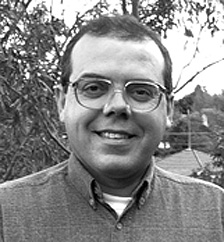 HENRY S. OLCOTT, president and cofounder of the Theosophical Society, whose death centenary was commemorated on February 17, 2007, may have sounded the essential keynote of the work before the fledgling Theosophical Society when he said in his Inaugural Address at the Mott Memorial Hall in New York, November 17, 1875:
HENRY S. OLCOTT, president and cofounder of the Theosophical Society, whose death centenary was commemorated on February 17, 2007, may have sounded the essential keynote of the work before the fledgling Theosophical Society when he said in his Inaugural Address at the Mott Memorial Hall in New York, November 17, 1875: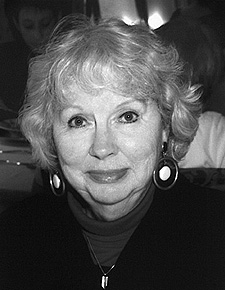 IN HER "VIEWPOINT" from the January-February 2003 Quest magazine, President Betty Bland included a quote found in HPB's Collected Works, vol. XIII, which reads:
IN HER "VIEWPOINT" from the January-February 2003 Quest magazine, President Betty Bland included a quote found in HPB's Collected Works, vol. XIII, which reads: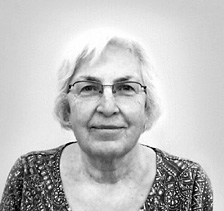 MARIA MONTESSORI had her first acquaintance with Theosophy, early in the twentieth century, when she went to hear Annie Besant speak in London in 1907 after Montessori had established her first Casa dei Bambini (i.e., Children's House). Annie Besant spoke in praise of Montessori's work in education which pleased Montessori, and thus sealed their friendship.
MARIA MONTESSORI had her first acquaintance with Theosophy, early in the twentieth century, when she went to hear Annie Besant speak in London in 1907 after Montessori had established her first Casa dei Bambini (i.e., Children's House). Annie Besant spoke in praise of Montessori's work in education which pleased Montessori, and thus sealed their friendship.